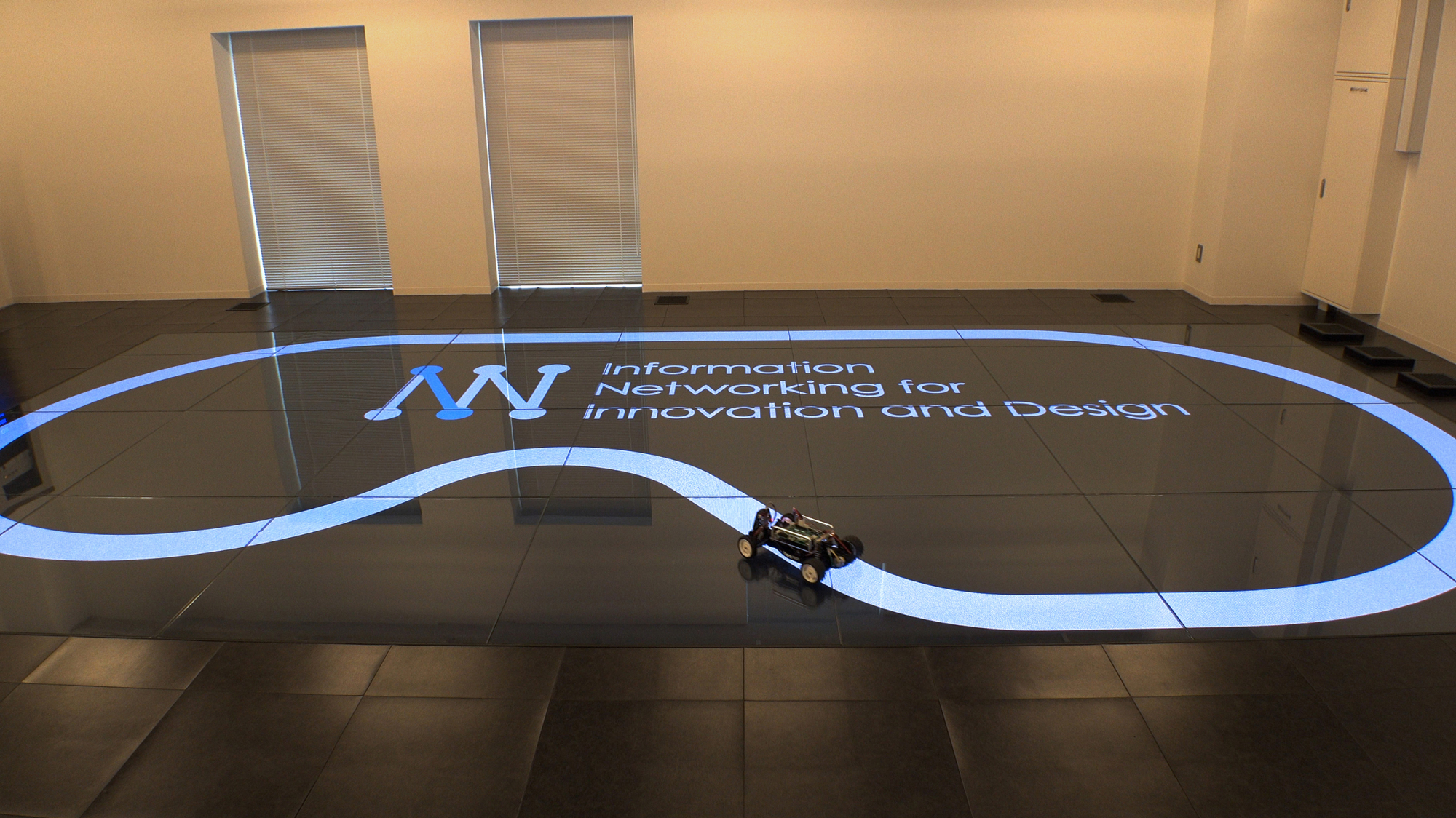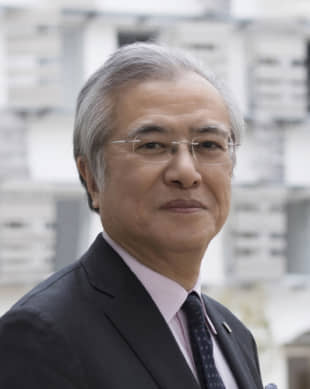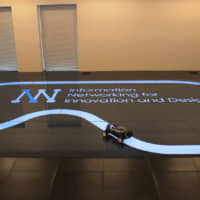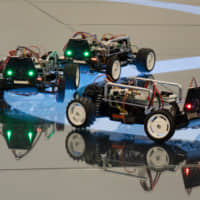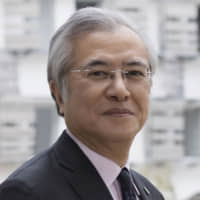As a so-called campus of the future, Toyo University's Faculty of Information Networking for Innovation and Design (INIAD) in Akabanedai, metropolitan Tokyo, offers students the value of networking through specialized course streams, which consist of science and engineering, digital design, business innovation and social infrastructure to best navigate today's information society.
INIAD's most radical feature, however, is its HUB-1 school building that strives to be completely paperless to best demonstrate the power of information technology and networking. Approximately 5,000 "internet of things" devices are installed in the 19,000-square-meter building, where PCs and projectors are utilized by both teachers and students to join the internet and various intranetworks.
This "concept of optimizing the control of equipment and devices according to how spaces are being used" is a goal of Faculty Dean Ken Sakamura's research. At INIAD, school notices and information are communicated via digital signages that are changeable with a single click, while an electronic library stores a vast collection of online data in place of printed books.
"Artificial intelligence (AI) and the internet of things have completely revamped society and we must continue innovating through networking and collaboration," said Sakamura, who is renowned as a pioneer of ubiquitous computing and TRON architecture.
A further distinction of INIAD is how it fuses liberal arts subjects with finance, and business units with computer science, civil engineering and industrial design.
As such, computer science education, teamwork and communication skills are common core requirements taught across INIAD's four course streams. Programming skills are taught so that students can navigate the uncertain job terrain of the future, whereas teamwork is encouraged so that students can work with others and tackle shared tasks. The ability to communicate in both English and Japanese is encouraged for conducting presentations and debates.
Of particular note is that all students learn the basis, framework and theory of information networking in their first year, while studies in liberal arts and other non-IT subjects are delayed until the second year of study. This is a different approach from most other universities, where general liberal arts subjects are usually covered within the first year.
INIAD class sizes are intentionally kept small, with only around 35 students per room to encourage active discussion and debate among students and their professors. The faculty also embraces a rich, student diversity, where non-Japanese, women, older students and those who are already working all form part of INIAD's student fabric.
"Ideally speaking, we want to raise our Japanese-foreign student ratio of 80-20, as well as that of male-female students of 65-35, to 50-50," said Sakamura. International students with limited Japanese language skills are given intensive training for smooth communication with their colleagues and professors.
The fully outfitted INIAD Makers' Hub, meanwhile, is a space where students can rapidly prototype new ideas. Drawing upon the availability of digital fabrication tools such as 3D printers, 3D scanners and laser cutters, as well as electronic measurement tools such as logic analyzers and oscilloscopes, students engage in the art of manufacturing and the modern day "maker movement."
"Such an environment allows the students to integrate various applications for objects such as voice-activated light switches using user actions such as swiping on the screen of their smartphones. This gives them a live feeling that they are actually broadening their environment through programming," Sakamura said.
Applying theory they have learned into action, students create various gadgets and devices, some of which help raise the quality of life. Examples include fully automated wheelchair prototypes that move freely from one room to another, automated doors, devices that can communicate and operate elevators, as well as fully automated miniature car models that move around, stop and change directions on INIAD's indoor circuit course.
INIAD, aware of the significance of lifetime learning and relearning, offers courses for those already active in the business society, together with designing and executing custom seminars for various corporations. Collaboration with other universities and businesses through the Collaboration Hub for University and Business network is also a priority, as is carrying out joint projects with partners in the European Union, Asia, North America and Japan, including government offices. INIAD is also maintaining close ties with big names in the global ICT industry.
For more information, see www.iniad.org.



